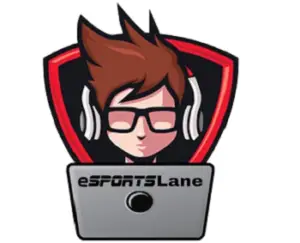In the burgeoning eSports industry, there are many roles and career paths one can consider getting into and one of them is that of an eSports Streamer. In the following passages we try to explain the basics of who is an eSports streamer, the roles and responsibilities associated with it and the various platforms on which the most popular streamers can be found.
Table of Contents
What is eSports Streaming?
eSports streaming refers to gamers recording themselves live online to public audiences over the various available online channel with Twitch being the most popular platform.
The first platform to popularize eSports streaming was Twitch. After gaining popularity in the mid-2010s, other platforms soon followed suit including YouTube Gaming, Facebook Gaming, Mixer and other services.
Today, it is one of the fastest growing segments of internet traffic with hundreds of millions of viewers watching streaming services on a monthly basis.
Who are eSports Streamers?
Professional eSports Streamers are those eSports players who record themselves playing video games in front of audiences (usually done live) and often provide engaging in-game commentary in between high-level playing.
They are an important aspect of eSports in the sense that many players actually started out as professional eSports athletes engaging in various competitions and then after retiring from competitive play, decided to go for live streaming their gameplay – as is the case for famous streamer, Ashkan Homayouni, who goes by the gaming moniker “TF Blade.”
At a very young age of 21, TF Blade had already gained a huge followed on Twitch after being the first player in North America to hit Challenger in season eight and also signing up for the competitive streaming team Team Liquid.
Other famous streamers include Shiphtur (specialty: League of Legends), S1mple (Counter Strike Global Offensive), Shroud (FPS and miscellaneous), AsmodaiTV (Heartstone) and Dakotaz (Fortnite). What all these players have in common is that they have stuck to playing a few core games and built strong fan bases around their gaming.
Though eSports streaming and eSports in general is dominated by men, there are quite a few popular ladies who have attracted huge followings. Among the very top female streamers include number one Imane Anys (who goes by the alias Pokimane) who has an impressive 3,254,207 followers and mainly plays League of Legends and Fortnite.
She is then trailed by Kathleen Belsten (aka LoserFruit) who plays a variety of games mainly playing Witcher 3, Overwatch and Just Dance and has a fanbase of 1,063,702 followers.
Third on the rankings according to lineups.com is Kristen Valnicek (username KittyPlaysGames) who plays Counter Strike Global Offensive, Dota 2 and Player Unknown’s Battlegrounds and attracts 1,006,903 followers on her channel.
Also Read:
- Things to Remember as a Beginner eSports Shoutcaster
- Career Tips Which Will Help Amateur eSports Journalists
How to Become an eSports Streamer?
We will cover this in a greater depth in another piece, but to give you a brief overview, in order to join the ranks of the eSports streaming community, essentially all it will take is for you to have a decent gaming PC/laptop, a stable internet connection and a functioning webcam or separate recording device to stream your gameplay.
The most common route to eSports streaming however is usually a going from a transition from competitive eSports to personal streaming – as players like TF Blade have achieved successfully.
We can also add a few other tips to be successful in eSports streaming. These include:
- choosing a popular game which already has a large audience (i.e. the most popular games worldwide for eSports currently in terms of prize money are Dota 2, Counter-Strike: Global Offensive, Fortnite, League of Legends and Starcraft II);
- providing in-game commentary and entertainment apart from raw gaming talent (by offering jokes and discussion on pop culture and current events); and
- maintaining a schedule and social media presence in order to inform followers regarding the next streaming and also to engage fans in the form of contests, giveaways and other promotions.
We have written an exhaustive guide on our 12 tips which can increase your streaming following on whichever platform you use as an eSports streamer.
How do eSports Streamers Earn?
Streamers earn their income through a combination of sponsorship, subscriptions and donations, and at times through affiliate marketing as well where they recommend other products or services and earn a commission out of it.
Why to Become an eSports Streamer?
By far, the most enjoyable aspect of becoming a professional eSports streamer is no doubt the fact that you are doing what you love. Given the very short career lengths which the top eSports gamers have, it makes sense to remain associated with the industry and in a reasonably lucrative role too.
Streamers feel a strong sense of independence in their work as they are basically “their own bosses.” Additionally, once a streamer develops enough experience and skill, they develop a strong sense of personal accomplishment and achievement – especially when their fan base increases in accordance with their competitive rankings.
Another benefit is the ability to influence others and effect social change – including supporting personal or social causes and also bringing attention to video games outside of the popular rankings.
Issues with eSports Streamer Career
As with everything there do exist drawbacks to becoming an eSports streamer.
Cases of stalking and cyber-bullying against streamers are not uncommon and streamers need to set up adequate safeguards against any benign or harmful followers like not disclosing contact information and details like phone numbers, house addresses, card information and other personal details.
Streamers should also be wary of such acts like “swatting” whereby someone makes false reports to the police against the streamer to discredit him and potentially jeopardize his/her reputation and “stream sniping” which occurs when a player watches the live stream of an opponent in order to gain advantage.
Twitch and Other Platforms for Streamers
Twitch remains the largest platform for eSports streaming.
Since the budding popularity of streaming began in the mid-2010s, Twitch has gone on to dominate the market for eSports streaming – by 2014, going so far as to overtake HBO’s online service in terms of web traffic as well as being ranked as the 4th largest source of peak internet traffic in the United States.
Twitch began its operations after spinning off from Justin.tv in June 2011.
After ballooning in popularity in 2014, Twitch was acquired by Amazon for $970 million and later integrated with Amazon’s own subscription service Amazon Prime.
By 2015, Twitch had reached 1.5 million streamers on its platform and an impressive feat of 100 million viewers per month.
In 2017, Twitch remained the undisputed global leader of live eSports streaming – well ahead of runner up YouTube Gaming.
Other less popular streaming platforms to consider include Mixer (owned by Microsoft), Facebook Gaming, Steam TV, Caffeine, HitBox, Beam, Azubu, Bigo Live, Afreeca, Disco Melee and Gosu Gamers.
In the largest gaming market in the world, being China, the two biggest players for eSports streaming are Huya and Douyu TV.
Huya is in fact dubbed the “Twitch of China” being the biggest platform in the country having already raised $180 million in the IPO offering in May 2018 at the NASDAQ.
Similarly, Douyu is planning an IPO in the United States to raise fresh capital. It should be worth noting that both the major platforms have been funded by Chinese tech behemoth Tencent – which already splurged $632 million in Huya and $462 million on Douyu.
As a testament to the global popularity of streaming platforms, in October 2017, a report from SuperData Research estimated that subscriptions for video game streams on Twitch and YouTube exceeded that for other general subscription based services like HBO, Netflix, ESPN, and Hulu, combined.
eSports Streaming Technology
Generally, for eSports tournaments, two or more players are connected to a local area connection via a router (with internet modem connection optional but usually also installed).
The router is then connected to a network switch which itself links with each individual PC, providing each player with unique IP addresses.
Apart from the players’ gaming PCs, there is usually also an ‘observer’ PC which overviews and moderates the streaming and a ‘production’ PC which is the computer actually responsible for the streaming of the game.
Apart from the traditional medium of using PCs for streaming, many dedicated gaming laptops have nowadays been developed with more powerful graphics cards, webcams and microphones and higher quality network connectivity as well to ensure smoother latency.
Gaming consoles have also taken the initiative with consoles like PlayStation 4 and Xbox One having in-built streaming and optional camera integration modules available to support streaming of games.
Conclusion
All in all, eSports streamers and streaming in general is now a core part of the wider eSports movement and is only poised to become even more popular in the future.
With more and more people getting access to cheaper computing technologies and internet connections, the eSports streaming community will invariably increase in size in the days to come and with it, promote eSports streaming and eSports in general further.
If you are also looking at other eSports career options, you can check for 20+ other eSports profiles in our exhaustive guide to job roles to consider after finishing your gaming career. If you are in the UK, you can also check for our list of British universities and educational institutes associated with eSports in the region here.


